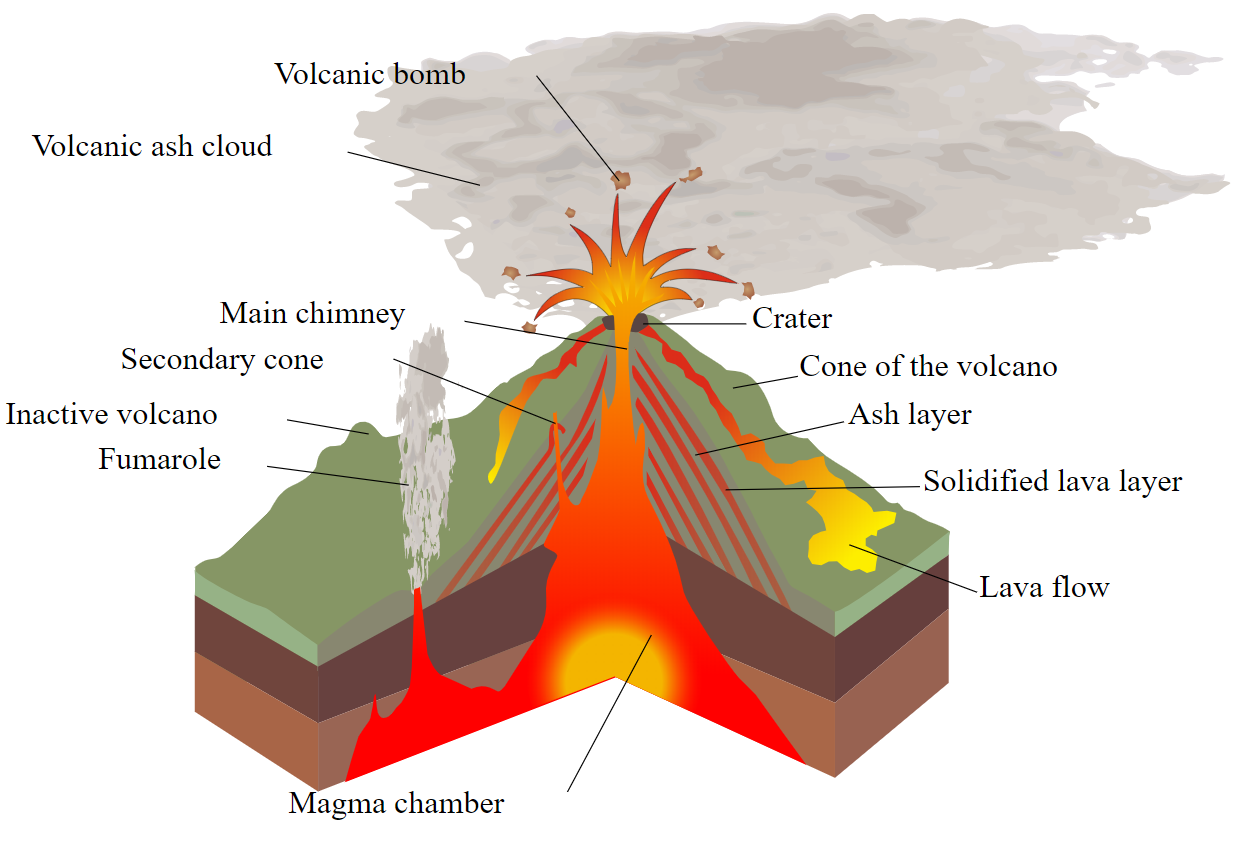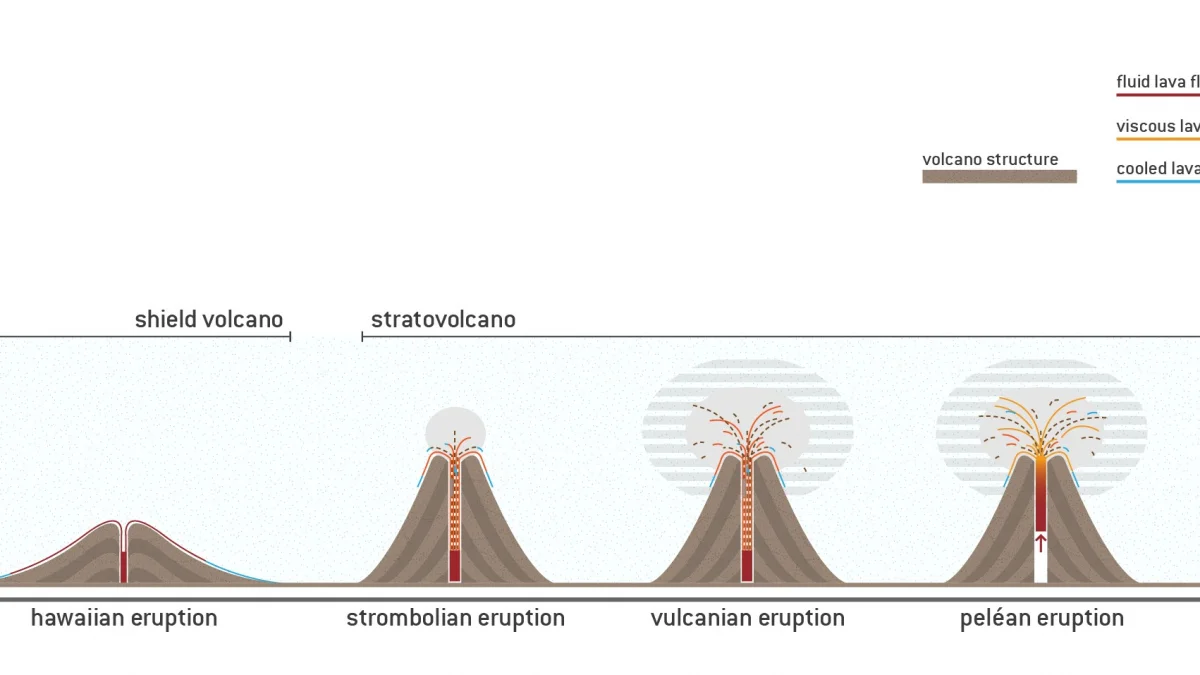Introduction
Volcanoes are nature’s fireworks, Earth’s way of putting on a spectacular show. These fiery mountains have an irresistible allure, captivating our imagination with their explosive power and awe-inspiring beauty. But beneath the fiery drama lies a fascinating story of the Earth’s inner workings. Volcanicity, are more than just breath taking natural wonders. They reveal the Earth’s history, its tectonic dance, and the fiery forces that have shaped our world.
Exploring the Earth’s Volcanic Wonders: A Journey into Volcanicity & Volcanology
Definition :
- A volcano is a geological feature, often a mountain or hill, that forms when molten rock, ash and gases are expelled from the Earth’s interior through an opening or vent in the Earth’s crust, driven by the forces of volcanicity.
- This process can result in eruptions of varying intensity.
- Volcanicity, on the other hand, is a broader term that encompasses all the processes related to volcanicity activity.
- It includes not only volcanic eruptions but also other phenomena associated with the movement of molten rock and magma under the Earth’s surface, such as volcanic earthquakes, geysers, and the formation of volcanic landforms.
- In essence, volcanicity is a mother term in which volcanoes are included which refers to all geological activity and processes associated with volcanoes .
Origin of Volcanicity
- Plate Tectonic Theory : The origin of volcanoes is associated with the weak zones of earth crust , which is represented by mountains at convergent boundary and mid oceanic ridge at divergent boundary .
- Volcanoes form through the process of volcanic activity, Volcanicity is driven by the movement of molten rock, or magma, from the Earth’s interior to the surface.
- Processes Involved : The mechanism of volcano{volcanicity}is not that simple as following processes / phenomena have a say in generation and ascent of magma.
- Gradual increase of temperature inside earth crust as depth increases with 1 degree celsius per kilometre . This cause melting of subsiding plate and formation of andesitic magma at convergent plate
- Lowering of melting point of rocks at divergent boundary due to reduction of overlying load causes formation of magma at divergent boundary .
- Water reaches the lower crust through seepage / fracture , this leads to formation of gas and vapour in the lower crust . This vapour along with lava power the ascent of magma .
- Thus based on type of plate interaction and strength of crust different types of volcano are formed.
- Mid Ocean Ridge :It has a non explosive fissure type volcano because lava is mainly formed due to reduction of overlying load which in turn results in divergence of plate , thus it is a slow process .
- Convergent Boundary Volcano :They are explosive because the subducted plate margin after reaching the benioff zone is melted and thus magma is formed .
- This magma is forced to ascend by an enormous volume of accumulated explosive gases and thus magma appears violent on the surface .

Type of Volcano
There is a wide range of variation in type of volcano based on its periodicity and intensity of eruption . Thus geographers have classified the volcano on different bases
- Classification based on Mode of Eruption
- Central eruption type / explosive eruption type
-
- These are characterised by a single, central vent or conduit through which volcanic materials, including magma, gases, and ash, are ejected during eruptions.
- These volcanoes typically have a symmetric, cone-shaped profile and can produce a wide range of volcanic landforms, such as stratovolcanoes and shield volcanoes.
| CLASSIFICATION | CHARACTERISTICS |
| Hawaii type |
|
| Strombolian type |
|
| Vulcanian type |
|
| Plinian Volcanoes: |
|
| Pelean Volcanoes: |
|

B. Fissure Eruption Type /Quiet Eruption Type
- Lava flood
- Mud flow
These volcanoes occur along a long fracture , fault , fissure and there is slow upwelling of magma from below and the resultant lavas spread over the ground surface, showcasing the influence of Volcanicity.
- Classification Based on Periodicity of Volcano
-
-
- Active Volcanoes: Active volcanoes are those that have erupted in historical times and are expected to erupt again in the future.
- They may display varying levels of volcanic activity, from frequent eruptions to occasional, but they have erupted recently enough to be considered a current threat of Volcanicity.
- Example – Pinatubo volcano philippines
-
- Dormant Volcanoes: These are currently inactive but have potential to erupt in future, showcasing the latent Volcanicity within them.
-
-
- These volcanoes have not erupted in a long time but are not considered extinct due to Volcanicity.
- Example -vesuvius volcano
-
- Extinct Volcanoes: Extinct volcanoes are those that have not erupted for a very long time, reflecting the absence of ongoing Volcanicity.
-
- There is no expectation of future
- Tamu Massif, the largest volcano on Earth, located in the Pacific Ocean
Conclusion
The exploration of volcanoes reveals Earth’s explosive fireworks guided by the force of Volcanicity. From active peaks to dormant giants, Volcanicity shapes our planet’s dynamic geological history.































